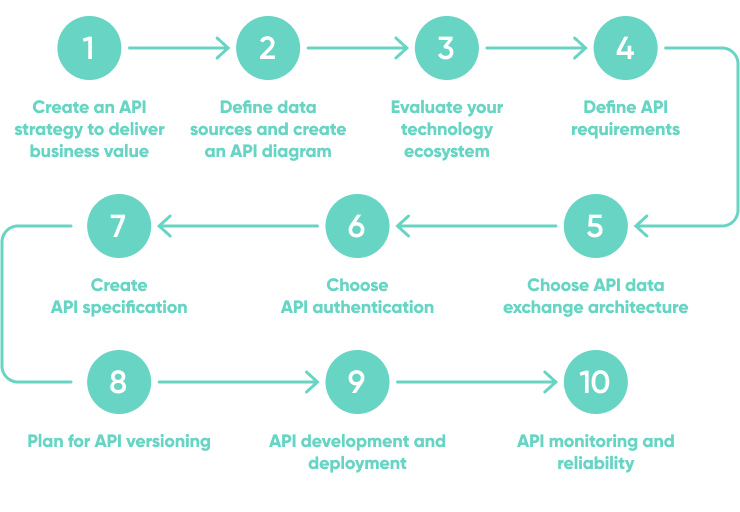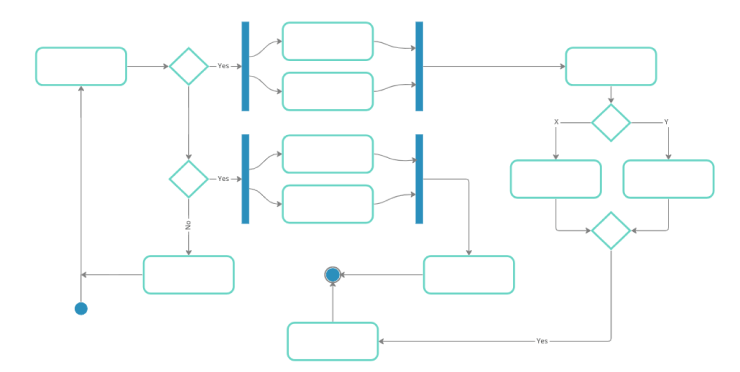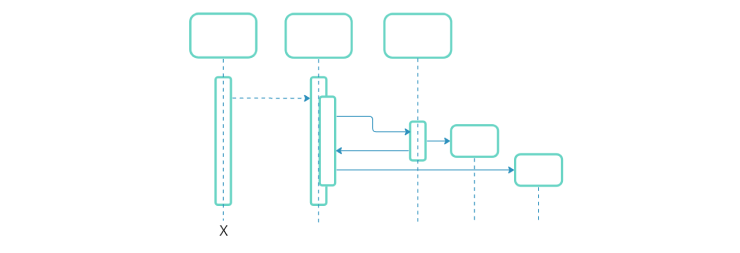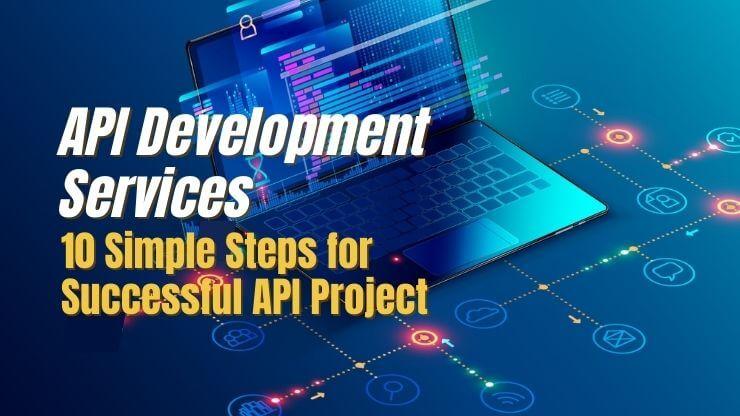APIs, or application program interfaces, are vital tools for businesses in all industries. They are at the heart of the most successful companies, powering everything from Google ads to shipment tracking.
APIs have grown to be the "glue" that not only empowers technical innovation but also enables businesses to grow new revenue streams, streamline their go-to-market strategy and deliver more value to their customers.
At SoftKraft, we provide API development services, and in this article, you will learn more about how we create APIs. Let's get started!
- What is API development?
- API development project plan
- API Development Services Outsourcing to SoftKraft
- Step-by-Step Custom API Development Process
- 1. Create an API strategy to deliver business value
- 2. Define data sources and create an API diagram
- 3. Evaluate your technology ecosystem
- 4. Define API requirements
- 5. Choose API data exchange architecture
- 6. Choose API authentication
- 7. Create API specification
- 8. Plan for API versioning
- 9. API development and deployment
- 10. API monitoring and reliability
- Conclusion
What is API development?
API development is the process of building diverse software components that allow applications to integrate with each other, share data and increase connectivity across your organization.
Many applications have their own APIs, but these aren't always enough to create the integrations you want, scale effectively, or give you the data flexibility you need. Custom APIs development gives you flexibility, simplifies IT systems design, and enables innovation when designing or managing tools and products. API documentation represents a contract between API providers and consumers.
API development project plan
Your API planning can be broken down into stages. Each stage represents a collection of actions and outputs:
| Actions | Outputs | |
|---|---|---|
| Establish project plan |
|
|
| Align organization |
|
|
| API design |
|
|
| API development |
|
|
| API Integration |
|
|
API Development Services Outsourcing to SoftKraft
At SoftKraft we provide API Development Services. We are driven by 15+ years of experience in API development and third-party API integration to support businesses with extensive expertise.
API Consulting - Years of expertise of our API specialists. Whether you need assistance with API design, development, integration, or management — we’re ready to support you.
Custom API Development - Custom API development services can help you unlock the potential of API integrations that streamline your business operations and enhance customer experience.
API integration services - Leverage our custom API integration services. Expand your software capabilities with open-source or third-party tools, including payment gateways, web platforms, maps, and social networks.
API Testing Automation - With the use of powerful testing platforms, our developers and QA engineers thoroughly check the API functionality, reliability, and security and ensure its high performance in production.
Need help with your API Development Project? - Contact Us
Step-by-Step Custom API Development Process
When designing API you want to build a long-lasting API that users love. An extensible, flexible API will save you time and money. Follow best practices to build the perfect custom API solutions:

Create an API strategy to deliver business value
API development can add value to a business in multiple ways. Before focusing on technical details, it is essential for API project leaders to ensure that interface architects understand the value the organization hopes to gain. Varied business needs should be the primary driver behind its API design process.
Broadly speaking, the business logic behind launching an API project will likely aim to achieve one or more of the following business objectives:
- Increasing revenue An API can frequently be a direct source of revenue. This could include charging API users for API access and facilitating a new revenue stream.
- Extending customer value APIs are the ideal solution for businesses that want to increase the value of existing customers.
- Increased operational efficiency APIs can help a company come up with data insights, or business processes automation because they make it easier to try new things. In particular, APIs let organizations come up with ideas and put them into action without having to change their backend systems.
- New paid products and services You can optimize your existing data or technology, and then offer them to other businesses, generate new revenue streams and reduce their operational expenses via economies of scale.
Define data sources and create an API diagram
The first step in creating an API is to identify your data sources and their data structure model using Entity Relationship Diagram. Once you have identified your data model, you should create activity and sequence diagrams that outline how these data sources interact with each other.
Data sources can be internal or external. Internal data sources are typically databases or web services that are used within your organization. External data sources are typically third-party applications that are not hosted within your organization. You need to take the APIs’ limitations into consideration.
You'll need to determine what you want the API to be:
- How are API endpoints intended to be called? Is order of those calls relevant?
- What data will the API need to retrieve from database?
- What will your API's developers need?
- How will errors or exceptions be handled / communicated?
Answer these questions thoroughly so you know what you want to achieve with the API and how to develop it. Don't start coding yet; you're still planning. Remember that not everyone on your team is technical.
Consider making a visual representation of your business processes and related API integration services. Visuals make information easier to understand and encourage collaboration.
Custom API solutions can be mapped with the following diagrams:
- Activity Diagram that help people on the business and development sides of an organization come together to understand the same process and behavior.

- Entity Relationship Diagram which illustrates how “entities” such as people, objects, or concepts relate to each other within a system.

- Sequence diagrams that describe how, and in what order, a group of objects works together.

Evaluate your technology ecosystem
You probably use several -- maybe dozens -- of third-party apps on a daily basis. For a lot of companies, making sure that their tools are properly integrated is a big challenge.
That's why you need API integration services to bridge the gaps between existing third-party systems and make sure you're working with a fully functional technology ecosystem, where your existing applications play nicely together and talk to each other in real-time:
- Identify the IT systems in which the API must play a part. Analyze your current business processes, and develop visual models to show how your custom API integration fits into existing IT systems. These models should identify the stakeholders you engage with.
- Determine what role your API should play in the ecosystem. Delineate the value propositions, core interactions, ecosystem stakeholders, conditions that could accelerate change, and the obstacles.
Define API requirements
API requirements include functional requirements (what API should do) and non-functional requirements (access policy and service level agreements). I.e.
Choose API data exchange architecture
With different API technologies available for sharing data between clients and servers, and each one having its own set of unique capabilities, it can be quite daunting trying to decide which one serves you best.
The three most popular technologies currently for creating APIs are:
REST is the most established and established API technology. REST API development involves URL-accessible endpoints that return JSON payloads that are readable by humans and simple to inspect. REST's use of URLs as unique identifiers for resources enables caching, which can improve performance.
When is REST appropriate? It is especially useful when you need to develop quickly or add new employees to an ongoing project. Because JSON payload formats are server-defined and cacheable, they work best when you do not need flexibility in the data return types.

GraphQL allows users to HTTP request data via structured data query language that uniquely allows clients to request any specific data that they need.
When powerful and efficient querying is required, GraphQL is a good choice. Rather than making separate HTTP requests to each data source, diverse data requirements can be met with a single HTTP request.
GraphQL is an effective solution when different users require complex or diverse data views. GraphQL's object notation is fairly intuitive, but it must be adopted deliberately.

gRPC is a high-performance, open-source remote procedural call (RPC) framework created by Google. gRPC differs from other RPC implementations in that API operations are declared in a language-agnostic format before client code (called a stub) is generated automatically in the target language.
gRPC is well-suited for situations where efficiency and performance are crucial, such as real-time communication services where you deal with streaming calls.

Choose API authentication
Assuming you are using REST data exchange architecture, there are multiple ways of API authentication, and some are more secure than others. The authentication method an API uses depends on the type of data being transmitted and parties involved in the communication. APIs working with confidential information should use more secure authentication methods (eg. OAuth), while simpler authentication methods like API Key Authentication might suffice for APIs with mundane information transmitted between servers. More secure methods tend to take significantlymore time to implement and might be more demanding for API consumers to integrate with.
- API Key Authentication secures an API with a long string of random numbers and letters. It’s much faster and easier than most other authentication methods. API Keys make it much harder for an attacker to guess their way into the system. But, if an attacker is able to get some API Keys, then the API is vulnerable.
- Open Authentication (OAuth) is a technique that offers authentication and authorization. OAuth requires the user to first log in to the application with their credentials. Then, the application requests authentication from the API server in the form of a token. The token typically has limited scope (limited number of systems accessible) and an expiration time. The application forwards the request with the token to the authentication server that accepts or rejects the request. The user doesn’t share credentials with third-party applications, keeping their login information secure, and since authentication tokens only exist for a period of time, a stolen token wouldn’t have a large impact. The multiple layers in play make OAuth one of the most secure API authentication methods.
- JWT Tokens (JWT) is similar to OAuth tokens and can used in many different scenarios. In fact, JWT can store any type of data, which pairs well with OAuth. With a JWT access token, far fewer database lookups are needed without compromising security. The downside is that a JWT cannot be revoked. This can be addressed by using JWT with refresh tokens and JWT expiration. With each API call, you check the JWT signature and verify expiration.
As you've seen, these three options aren't always mutually exclusive and can be combined:
- Use API keys if you expect developers to build applications with low risk of leaking the API keys to unauthorised parties (like in server-to-server communication or for internal applications).
- Use OAuth access tokens if you want users to easily provide authorization to applications without needing to share private data or dig through developer documentation.
- Use JWT with OAuth to limit database lookups, especially if you need the access for a brief period of time.
Create API specification
The overhead of maintaining API specification can be lifted by tools like Swagger and RAML, which allow you to define API specifications and generate API documentation easier, ensuring that it stays current as your API evolves.
The evolution of your API’s functionality is inevitable, but the headache of maintaining API documentation doesn’t have to be. Tools like Swagger or RAML take the hard work out of generating and maintaining your API docs, ensuring your documentation stays up-to-date as your API evolves.
API documentation is essentially the reference manual for your API. API documentation is meant for developers to read and understand. Providing documentation that is well-designed, comprehensive, and easy to follow leads to developers having a great experience with the API. A great developer experience decreases the time it takes to onboard API users and requires less support from your team.
Using a process called Spec-Driven Development, you can build a long-lasting API, while catching glitches, inconsistencies, and design issues early on. Although this process usually adds 2–4 weeks to the development cycle (or more, depending on the project size), it can save months and even years of struggling with poor design, inconsistencies, or worse—having to build a brand-new API from scratch.
Plan for API versioning
As your API evolves over time, you will need to release new versions to keep up with the changes. There are a few different ways to version your API, and it's important to choose a method that makes sense for your use case.
One popular way to version an API is to use a URL path versioning scheme. With this method, you include the version number in the URL path, like so:
http://example.com/api/v1/
http://example.com/api/v2/This approach is simple and easy to understand. It also allows you to keep old versions of your API running alongside the new versions so that users have time to transition to the new API.
Another common way to version an API is to use a request header versioning scheme. With this method, you include the version number in a request header, like so:
X-API-Version: 1
X-API-Version: 2This approach is a bit more flexible than URL path versioning since it allows you to version individual resources rather than the entire API.
API development and deployment
Building easily maintainable APIs can be challenging. API programming protocols, error handling, and code modularity are just some of the questions that your web APIs software development team will need to address.
Using development tools like CI/CD to automate deploying applications has a number of benefits. More specifically, as deployments become much less error-prone and much more repeatable, the development team can focus on developing applications to business requirements and release becomes faster, leading to rapid feedback.
API monitoring and reliability
Any API outage, whether your private, your partner’s or public API, impacts your partners' perception of your reliability. With API monitoring, you can better understand the performance, responsiveness, and availability of your APIs.
It is possible to monitor the status/uptimeof APIs by creating automated monitors that run at predetermined intervals. These are extremely versatile and permit the execution of simple and complex requests, including assertions. Some of the tools that can help you monitor API Better Uptime and PagerDuty. To better understand potential unhandled cases and other problems with API it would be also beneficial to set up some error monitoring tools like Sentry or Rollbar.
API management best practices:
- Design API architecture with resilience in mind
- Monitor API activity and performance
- Release smaller updates to detect errors more quickly
- Respond to configuration errors, outages, and downtime
- Learn from previous issues and prevent future failures
Conclusion
Well-designed, flexible, and scalable APIs are the key to unlocking the power of the data your business holds. When applications across your business integrate and exchange data, you gain access to powerful real-time analytics and valuable forecasting insights that aren’t possible without. For non-tech people, this task is rather challenging. API development company can help you choose the right technology stack and appropriate development approach.







